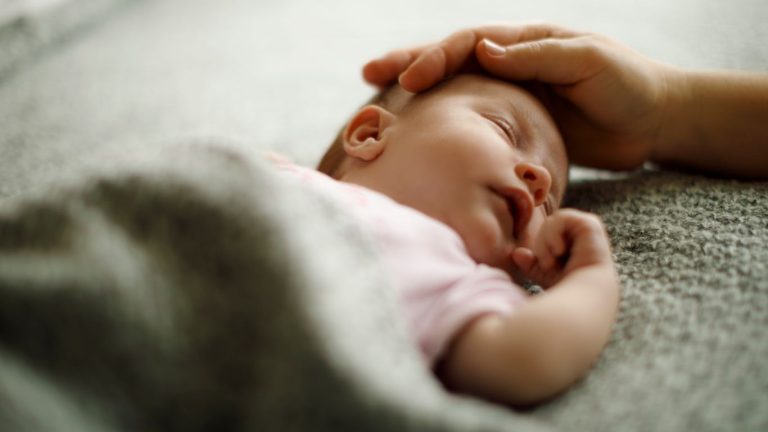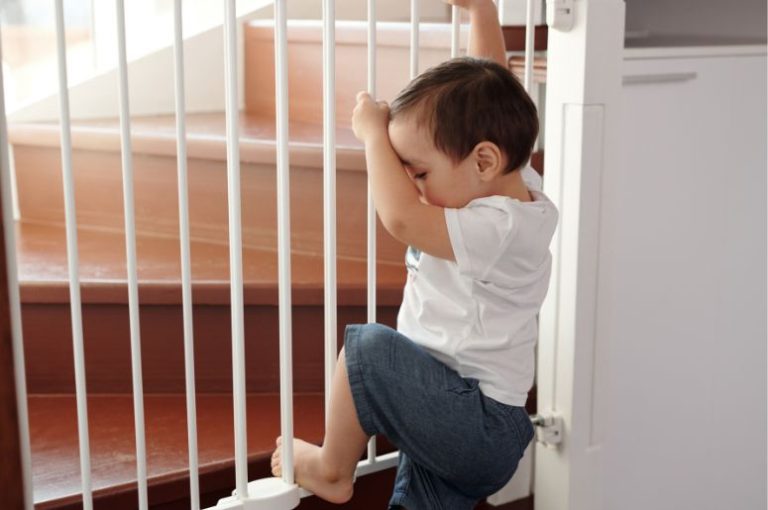Cots and bassinets provide a safe place for baby to sleep. This article takes you through the pros and cons of different styles of cots and bassinets.
Like most pieces of baby furniture, there are a host of makes, models and styles for you to choose from, and just what you choose depends on your needs.
There are regulations for cots used for household purposes to ensure safety for babies. The following cots are excluded from these regulations:
- Hospital cots
- Bassinets
- Folding cots
- Cradles
- Antique cots
- Collectible cots
Details about these regulations can be found on websites listed at the end of this article.
Some parents like to use a bassinet in the first few months and then move onto a cot, while others use a cot right from birth. There is no right or wrong arrangement, but here are some things to consider when making your choice.
Bassinets
Pros of bassinets
- It is recommended that parents have their baby with them in the same room for the first 6 months to reduce the risk of cot death. A bassinet is smaller than a cot, so therefore takes up a lot less space in an already crowded room.
- Most bassinets have wheels, which allow you to move them around the house easily. In the early weeks, many mums like having their baby sleep in the living area during the day and a bedroom at night.
- Some bassinets have a rocking feature which helps to settle an upset baby.
- Bassinets provide a smaller sleeping area when baby is very small. It may just be a mother’s perspective, but bassinets seem that little bit cosier for tiny babies.
Cons of bassinets
- Babies grow so fast and within 3-6 months are too big to sleep in a bassinet.
Checklist and features to consider when buying a new bassinet
- Are the wheels lockable?Make sure the wheels are lockable, so that the bassinet can sit safely in one place when baby is sleeping.
- Can the bassinet actually support your baby?Not only does your bassinet need to be big enough to hold baby for a few months, it must also be able to carry their weight. While most bassinets are similar in size, their weight capacity can vary dramatically. Read the specifications carefully, or ask the sales assistant if you are unsure.
- Does the bassinet have a rocking or vibrating feature?This feature is not essential, but is definitely useful if you have a hard to settle baby.
- Can the sleeping portion of your bassinet be removed and used as a carry cot?Some Mums find this a really useful feature, particularly if the carry cot fits inside your pram.
- Does the bassinet have a basket or shelf underneath for storage?If you are using the bassinet in your own bedroom, you will want to be able to keep a few essentials near by without taking up all your dresser space.
- Can the bassinet fold up for easy storage?You will only be using the bassinet for 3-6 months, so unless you are planning on only one child, you will need to store it away for the next one.
- Don’t rely on the seller to ensure that saftey requirements are met in the brand you are purchasing. Make sure you check the safety features and requirements out your self
Cots
Pros of cots
- Most cots have 2 height settings for the base of the cot. When baby is very small, you can set the base up high to save your back, and then simply drop it down as baby gets more mobile. This means cots can be used from birth until your child is old enough for a standard bed.There are some cots which also convert to a bed when your child is ready, and then onto a sofa after that. Either way, cots provide value for money as they are used for many years.
Cons of cots
- Cots are bulky and hard to move around if you want baby to sleep in your room to start with.
Checklist when buying a new cot
- Make sure the cot complies with Australian and New Zealand safety standards, and check for a manufacturers guarantee. (See website links below for details on New Zealand cot safety standards)
- It is now standard for most cots to have 2 height settings, but there is still the odd make around that does not. If the cot you like doesn’t have a bassinet height, you can purchase a cradle which hangs into the cot and acts like a rocking bassinet.
- If the cot has wheels, make sure they can be locked into place to ensure the cot cannot be moved when the baby is sleeping.
- How easy are the drop side catches to release? The catches must be child proof, but some models are adult proof also!
- 4 in 1 cots (ones that go from cot – bed – sofa) are great if you are only having one child, but if you are planning on having more, chances are your first child will still be using the cot when the next one arrives. While they appear to be excellent value, weigh up how that will work for your family.
- Whilst by law sellers are required to met the regulations set out in the safety standards for cots don’t rely on the them to ensure that saftey requirements are met in the brand you are purchasing – check the safety features and requirements out yourself.
What do I really need for my baby?
Put simply, what you really need is a safe place for baby to sleep. In order for anyone to sell a cot or bassinet it must comply with New Zealand / Australian safety standards, even if it is second hand. If you are buying your cot or bassinet new, there should be a safety sticker attached to the furniture, however with second hand furniture you may need to go through your own safety check list.
Some of the key regulations for cots that must be met
- A minimum depth of 600mm from the mattress base to the lowest point on any side or end of a cot
- No horizontal or diagonal bars or any other fixtures that would allow a child to climb up the sides of a cot
- Permanent warning and information label located on the cot mattress base
- A space between bars and the mattress sides of no more than 20mm when the mattress is centred in the middle of the cot
- A space between the vertical bars of between 50-95mm
- No protrusions that measure more than 5mm that a child could fall on or snag clothing on. (protrusions are things like nuts, corner posts, decorative features )
- These are not all of the requirements of the regulations and they do not cover the requirements in full detail. (see website links below for further details)
Once you have a safe cot and mattress, you need to make sure you put the cot in a safe place in the room. When babies are immobile it seems like a funny thing to fuss over, but once they learn to stand up and explore, all sorts of accidents can occur.
Make sure the cot is away from windows, especially those on a second story. Curtains and curtains strings should also be well out of reach, as should mobiles and hanging toys. All of these things are potential hazards for strangulation. Keep the wall above your baby’s cot free from pictures, mirrors or shelves which could potentially fall and injure your child, and make sure any power points are covered with safety plugs.
How much will cots & bassinets cost and where can I buy them from?
Like anything, cots and bassinets vary in price depending on the make, model and style. A new bassinet starts from about $120 and goes right through to the $200 mark depending on the features. Cots range in price from approximately $350, through to nearly $1000 for elite 4 in 1 versions. There are also some basic 4 in 1 versions available for around $500.
Cot mattresses range in price from $70 for a foam mattress (which is only suitable for occasional use otherwise it will form a dip where baby lies), approximately $150 for an inner sprung, and $280 for an organic cotton version.
Cots, bassinets and mattresses can all be bought from large department stores or specialist baby shops, as well as on-line. If purchasing your cot on-line, be sure to consider shipping costs, currency conversions, and any relevant safety standards if the site is from overseas.
How can I save money on cots and bassinets?
Buying a cot or bassinet second hand is a good way to save money, but it is important that you carry out the safety check list above before committing to a purchase. It is recommended that you buy a new mattress- this way you can guarantee it is smoke free, clean and hygienic.
Cots and bassinets can be bought through traditional second hand methods such as general second hand stores, newspapers, auction websites, and buy/ sell/ trade and exchange type publications.
For infromation on other baby purchases see our Kiwi Families articles on Car Seats & Capsules and Bathing & Changing
The information contained in this article is a guide only and is not intended to be a subsitute for reference to the apropriate legislation and/or legal advice.
Regulations and Safety Information Websites
Standards New Zealand develop standards and other specifications to improve the quality of goods and services; facilitate trade and commerce; and promote safety health and welfare. You can purchase the full details of regulations on this website
www.comcom.govt.nz/FairTrading/ProductSafetyStandards
The Commerce Commission details acts that prohibit certain conduct in trade, provides for the disclosure of consumer information relating to the supply of goods and services and promotes product safety. You will find some key information here relating to cot safety regulations.




